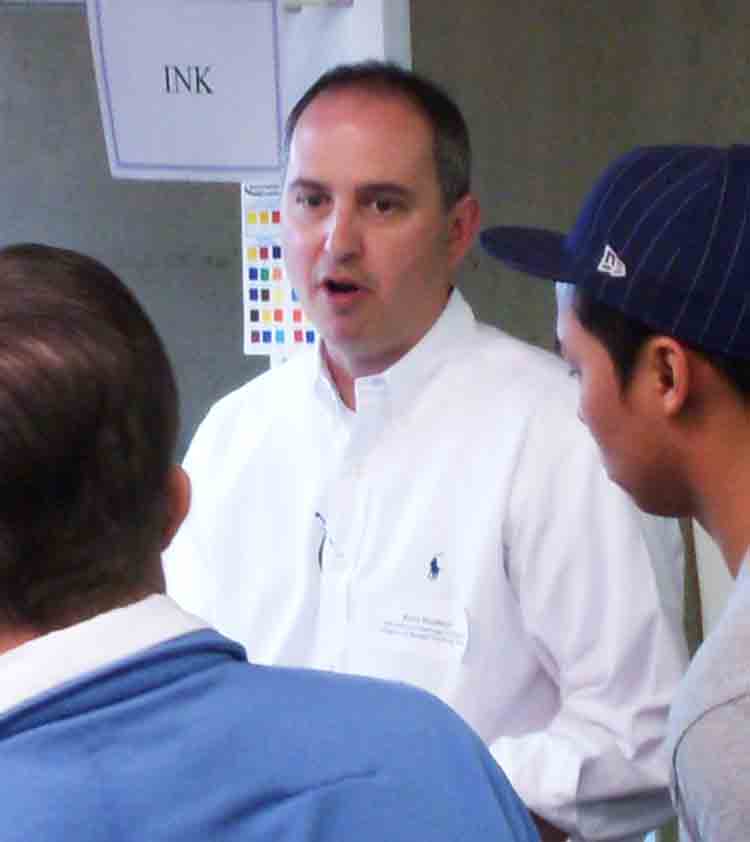Which Dryer Should I Buy, Gas Or Electric?
December 23, 2009

Here is Kent Hudson (International Coatings’ National Sales Manager) with a great insight into this debate:
“Many printers have asked the question “Which dryer should I buy, Gas or Electric?”
To get the best answer, you have to ask yourself how much production will need to go through this dryer. The good rule of thumb is: If your production needs are low, an electric dryer will do the job and can be more economical to purchase. If your production needs are high, a gas dryer will be more economical to operate, but normally much more expensive to purchase. If you are operating at high production speeds, you should examine the differences between the two types more thoroughly; allow me to explain:
Any dryer used for curing plastisol ink needs to be capable of reaching temperatures in excess of 320º. In a gas dryer, this is done by burning a gas flame and moving the air across the flame to reach the desired temperature inside the dryer. The hot air is then blown into the heat chamber and down across the conveyor belt. To save energy, some of this hot air is recycled back through the heat chamber again. This makes gas more efficient to operate, but makes gas dryers more expensive to manufacture. The gas burner is capable of heating a large amount of air so by design, it works better in larger dryers.
Electric dryers on the other hand use infrared (IR) heat. The elements or panels tend to be less expensive and are available in small sizes making this a perfect choice for the smaller dryers. IR heat elements are installed through the heat chamber above the conveyer belt directing the heat down. The higher-quality electric dryers may also have an internal fan to get some air movement. This can help to balance the heat distribution in the heat chamber, thus reducing the hot spots in the dryer which then allows for curing of water base inks as well as plastisol inks.
Gas dryers use a form of heat called Convection Heat to process the curing. Convection Heat put simply is hot air. Controlling the temperature in a gas dryer can be done more accurately than controlling the temperature in an electric dryer. Remember, one of the problems with electric dryers is that they heat with infrared (IR) energy. IR energy heats objects not air and heats them at different rates depending on how the objects absorb the energy. IR heat also “sees” color. This means, dark colors absorb IR energy faster than light colors. This is not an issue with gas dryers since hot air is indeterminate no color. It will heat all colors at the same rate. Electric dryers use IR heating elements or panels that actually heat up around 800º to 1200º. They have to cycle on and off repeatedly to keep a constant temperature setting. This driving heat, when the element is on, can quickly scorch or burn a garment. In a gas dryer, the hot air can be controlled at exactly the temperature needed. This means, if the temperature is set for 320º, the hot air inside the dryer is 320º- no more, no less. With this kind of temperature control, it makes it much easier to work with problem fabrics such as may shrink, scorch, or bleed when exposed to too much heat.
So in summary, there are two important factors that should be reviewed before making a decision: The first is the purchase price. The second is the cost of operation.
Electric dryers range in price from $2,000 to $15,000, are generally less expensive to manufacture than gas, making this a good choice if you are trying to keep the purchase price down. In addition, IR heating elements tend to work better when used for shorter widths, typically not wider than 48 inches. They do consume a lot of electricity though, making the cost of operation expensive, especially on the larger sized dryers. If your production needs are smaller, say a manual printer or having one or even two automatic printing machines, an electric dryer may be a good choice.
Gas dryers can range in price from $10,000 to $40,000 or more. They use high technology burners to safely and efficiently heat air and are more expensive to manufacture. This puts your initial purchase price higher. These dryers are usually larger in width from 36 to 72 inches and can even have multiple heat chambers. This gives you high production volume and a fast conveyor belt speed. The convection heat is more controllable and can be adjusted to precise temperatures. This is very useful with special fabrics or inks that need tighter temperature controls.
So which is better, gas or electric? Gas dryers are my choice as the best kind of dryer to use due to the type of heat and the control this form of heat gives you. If your production needs are large and you can afford the higher purchase price, get it. If your needs are smaller and you have limited funds available for purchase, then electric will certainly do the job. Just remember, you will have some limitations. Always keep that in mind.”


